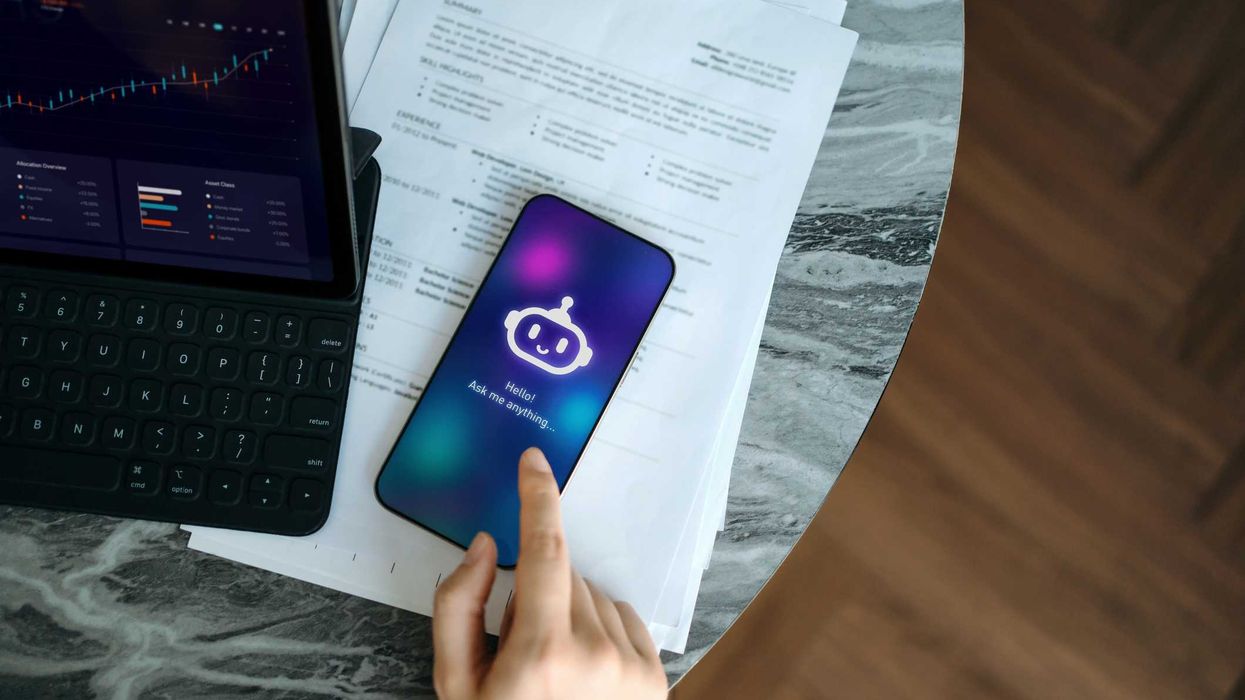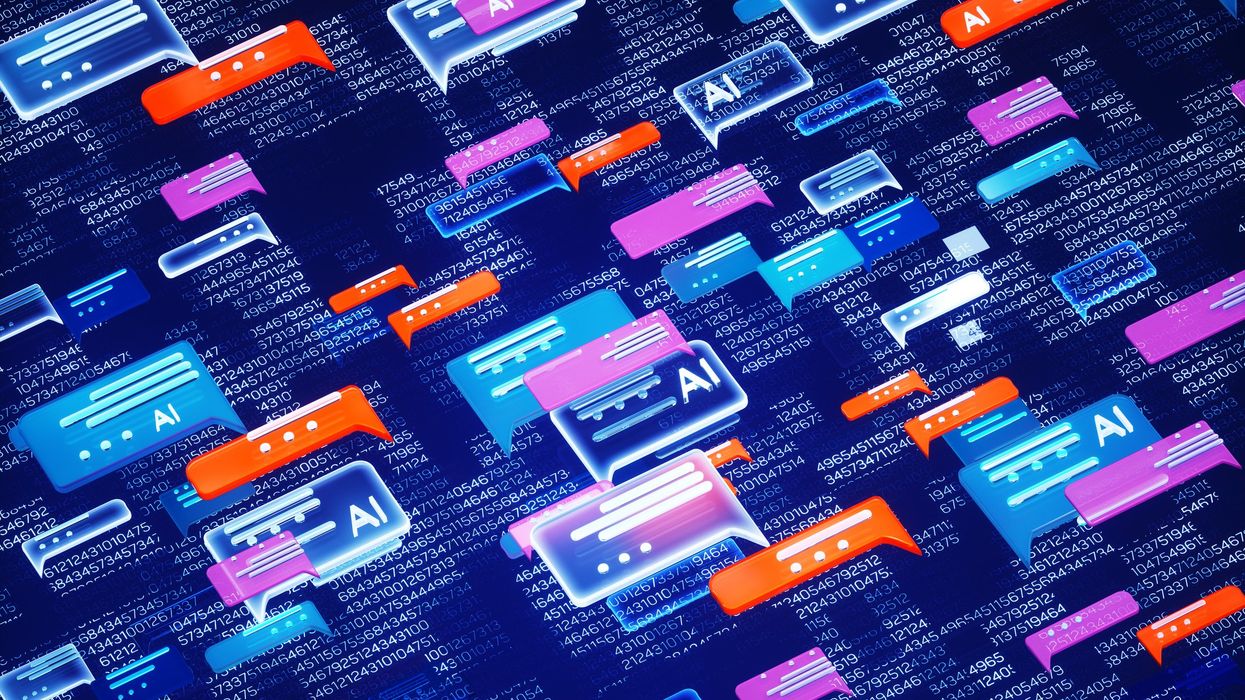In recent years, American workers have been going through an unprecedented experiment in how we work. During the COVID pandemic and social distancing, U.S. businesses embraced the latest online technologies to vastly expand remote work. That, in turn, ushered in the slow creep of artificial intelligence (AI) applications into every crack and seam of society, including in the workplace.
If 2023 was about increasing adoption of AI coming out of the pandemic, experts are saying 2025-26 will be when companies implement deeper changes in the workplace based on ever more pervasive AI.
New technology brings both positives and negatives. In the past, the introduction of technologies like tractors, electricity, telephones, and mechanization in general produced huge increases in labor efficiency (known as productivity). But in the short term, many Americans suddenly found that their skills were obsolete, and they joined the unemployment line.
With new job training and skill updates, most of those people were able to find new employment. Sometimes the new jobs were not as good as the old employment, with lower wages, but other times the new jobs were better. Over time, young people in particular got trained for the new economy, and most everyday Americans enjoyed greater prosperity. The United States became attractive to everyday people around the world for its well-off middle class.
What will happen this time with the new wave of AI-driven workplace technologies? Will they create greater productivity and new types of jobs that will benefit most Americans? Or will AI result in employment losses, declining wages, and poorer quality jobs? Several new studies give us a clue, and so far, the results show a red flag.
AI explodes in the workplace
No question, AI has proliferated in the workplace. A recent workforce poll of nearly 20,000 workers, by the prominent pollster Gallup, found that the percentage of U.S. employees who say they have used AI in their jobs at least a few times a year has nearly doubled since its 2023 poll, from 21% to 40%. The percentage of U.S. employees frequently using AI in their jobs has also nearly doubled to 19%.
This AI surge is particularly noticeable in white-collar jobs, with over a quarter of these employees reporting frequent AI use. The industries with the highest percentages of frequent AI users include technology (50%), professional services (34%), and finance (32%). In comparison, frequent AI use by production and front-line workers has remained essentially flat for the past two years.
But will AI result in job losses? Many projections from a range of sources make this difficult to predict. Goldman Sachs, one of the world’s largest investment banks, has projected that 300 million jobs around the world could be lost to AI automation over the next 10 years, affecting 25% of the global labor market. The widely discussed Scenario AI 2027 report quotes experts who expect quick implementation over the next decade with an impact “exceeding that of the Industrial Revolution.”
Marc Benioff, CEO of Salesforce, one of the largest software companies in the world for business productivity applications, says that AI is already doing 30% to 50% of all the work at his company, and he believes that growth will continue. Recently, Microsoft announced two rounds of layoffs affecting 16,000 workers, driven in part by AI efficiencies.
Those are the projections, but what about today? Are we seeing impacts from the recent rise of AI use in the workplace?
AI’s impact on entry-level positions for young people
A new study from Stanford University’s Erik Brynjolfsson found that young workers aged 22–25 in “highly AI-exposed” jobs, such as software developers, accountants, and customer service agents, are being replaced by AI at a rapid rate. Since the release of OpenAI’s ChatGPT in November 2022, this demographic has experienced a 13% decline in employment. Labor research firm Revelio Labs has found that postings for entry-level jobs have declined by about 35% since January 2023. These studies confirm what others, such as the New York Federal Reserve, have found, namely that entry-level positions and work opportunities for recent college graduates have “deteriorated noticeably.”
“There’s definitely evidence that AI is beginning to have a big effect,” says Stanford’s Brynjolfsson. "This is the fastest, broadest change that I've seen," second only to the shift to remote work during the pandemic.
And so far, the expected rise in worker efficiency has not arrived. One survey from the online labor platform Upwork polled 2,500 professionals, finding that 77% of workers say that generative AI has actually decreased their productivity and increased their workloads. According to the report, many workers feel “overwhelmed by the added workload and complexity it brings,” even as 71% of full-time employees report being burned out, and 65% report struggling with increased employer demands.
Is it too soon to gauge the AI positives?
AI proponents preach that it's necessary to have patience with the new technologies. Even the most transformative technologies, such as steam power and electricity, took decades to generate large-scale economic effects. Just like with the old technologies, they say eventually new jobs will be created and labor productivity will rise. Labor productivity is important because when a company or society can produce more products and services with less labor, that, in theory, results in increased wealth. Various experts have weighed in with a range of predictions regarding productivity increases, from 15% over ten years (Goldman Sachs) to as high as 34% (McKinsey Global Institute). But other economic experts have doubts that the new AI technologies will unfold like past breakthrough technologies.
Economist Robert Gordon showed in his magisterial volume, “The Rise and Fall of American Growth,” that the enormous increases in productivity that made modern America what it is today occurred in the hundred-year period from 1870 to 1970. That's when now-familiar technologies like automobiles, washing machines, refrigerators, running water, toilets, telephones, light bulbs, elevators, and other consumer goods vastly increased our quality of life, as well as spurred the creation of tens of millions of new jobs and gave a huge boost to the economy.
But after 1970, productivity declined, and Gordon and other economists showed how productivity increases from the computer and internet revolutions, outside of a few short years in the 1990s, have actually been relatively small. Nobel laureate and economist Robert Solow famously said, "You can see the computer age everywhere but in the productivity statistics.”
Moreover, while the productivity gains over the last 40 years have been modest in scale, the benefits have not flowed equally into average workers’ pockets in the form of higher wages. Indeed, wages have been stagnant since the 1970s. Instead, the increased value coming from productivity increases has gone into the pockets of a smaller, wealthy class, resulting in growing inequality and alienation (amidst slogans about the “1% versus 99%”).
The economist Thomas Piketty and his best-selling book, “Capital In the 21st Century,” advanced his now-famous formula, r > g, meaning that when an economy is growing due to technological innovation, profits earned from investment and finance will always grow faster than increases in wages. That’s a problem, in part because of who owns the new technology—the wealthy tech companies and their wealthy stockholders. With so few Americans owning any substantial amount of stock and having to rely instead on stagnant wages, inequality has grown as part of the natural dynamic of how a capitalist economy is propelled forward by investment and technological innovation.
In the short term, AI impacts that are reducing the number of entry level positions can be expected to increase the anxiety and pressure on young people. Many youth are feeling abandoned as they see their future prospects apparently slipping away. A recent study found that 35% of Gen X and 33% of millennials feel worse off than their parents, far more than the 19% of baby boomers and 17% of Gen Z who say the same. Job losses due to AI joins crushing student loan debt, stagnant wages, and soaring housing costs as key factors in causing many Gen Xers and millennials to doubt if they will ever achieve the same financial stability as their parents.
Hope is in short supply among many youths, and demagogues will be able to fill that gap with their articulation of young people’s sense of victimization and outrage. That is a worrisome prospect.





















A deep look at how "All in the Family" remains a striking mirror of American politics, class tensions, and cultural manipulation—proving its relevance decades later.
All in This American Family
There are a few shows that have aged as eerily well as All in the Family.
It’s not just that it’s still funny and has the feel not of a sit-com, but of unpretentious, working-class theatre. It’s that, decades later, it remains one of the clearest windows into the American psyche. Archie Bunker’s living room has been, as it were, a small stage on which the country has been working through the same contradictions, anxieties, and unresolved traumas that still shape our politics today. The manipulation of the working class, the pitting of neighbor against neighbor, the scapegoating of the vulnerable, the quiet cruelties baked into everyday life—all of it is still here with us. We like to reassure ourselves that we’ve progressed since the early 1970s, but watching the show now forces an unsettling recognition: The structural forces that shaped Archie’s world have barely budged. The same tactics of distraction and division deployed by elites back then are still deployed now, except more efficiently, more sleekly.
Archie himself is the perfect vessel for this continuity. He is bigoted, blustery, reactive, but he is also wounded, anxious, and constantly misled by forces above and beyond him. Norman Lear created Archie not as a monster to be hated (Lear’s genius was to make Archie lovable despite his loathsome stands), but as a man trapped by the political economy of his era: A union worker who feels his country slipping away, yet cannot see the hands that are actually moving it. His anger leaks sideways, onto immigrants, women, “hippies,” and anyone with less power than he has. The real villains—the wealthy, the connected, the manufacturers of grievance—remain safely and comfortably offscreen. That’s part of the show’s key insight: It reveals how elites thrive by making sure working people turn their frustrations against each other rather than upward.
Edith, often dismissed as naive or scatterbrained, functions as the show’s quiet moral center. Her compassion exposes the emotional void in Archie’s worldview and, in doing so, highlights the costs of the divisions that powerful interests cultivate. Meanwhile, Mike the “Meathead” represents a generation trying to break free from those divisions but often trapped in its own loud self-righteousness. Their clashes are not just family arguments but collisions between competing visions of America’s future. And those visions, tellingly, have yet to resolve themselves.
The political context of the show only sharpens its relevance. Premiering in 1971, All in the Family emerged during the Nixon years, when the “Silent Majority” strategy was weaponizing racial resentment, cultural panic, and working-class anxiety to cement power. Archie was a fictional embodiment of the very demographic Nixon sought to mobilize and manipulate. The show exposed, often bluntly, how economic insecurity was being rerouted into cultural hostility. Watching the show today, it’s impossible to miss how closely that logic mirrors the present, from right-wing media ecosystems to politicians who openly rely on stoking grievances rather than addressing root causes.
What makes the show unsettling today is that its satire feels less like a relic and more like a mirror. The demagogic impulses it spotlighted have simply found new platforms. The working-class anger it dramatized has been harvested by political operatives who, like their 1970s predecessors, depend on division to maintain power. The very cultural debates that fueled Archie’s tirades — about immigration, gender roles, race, and national identity—are still being used as tools to distract from wealth concentration and political manipulation.
If anything, the divisions are sharper now because the mechanisms of manipulation are more sophisticated, for much has been learned by The Machine. The same emotional raw material Lear mined for comedy is now algorithmically optimized for outrage. The same social fractures that played out around Archie’s kitchen table now play out on a scale he couldn’t have imagined. But the underlying dynamics haven’t changed at all.
That is why All in the Family feels so contemporary. The country Lear dissected never healed or meaningfully evolved: It simply changed wardrobe. The tensions, prejudices, and insecurities remain, not because individuals failed to grow but because the economic and political forces that thrive on division have only become more entrenched. Until we confront the political economy that kept Archie and Michael locked in an endless loop of circular bickering, the show will remain painfully relevant for another fifty years.
Ahmed Bouzid is the co-founder of The True Representation Movement.